-
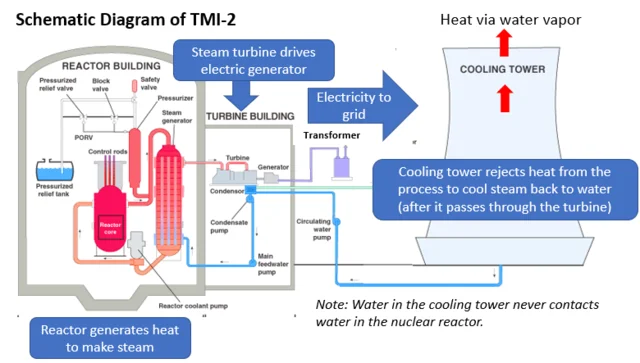
- Unit 2 pressurized water reactor operating at 97% power
- Minor malfunction in secondary cooling circuit
- Ultimately lead to reactor core partial melting and radioactive material released
-
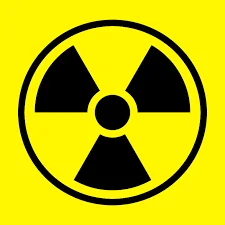
- 165 minutes after start of problem, radiation alarms activated
- 6:56 AM plant supervisor declared site area emergency
- Less than 30 minutes later, station manager announced general emergency
-

- Control room operators needed to ensure integrity of reactor vessel
- Boron concentration sample needed to approve shutdown of reactor entirely
- Sample looked like "Alka-Seltzer" and highly radioactive
-
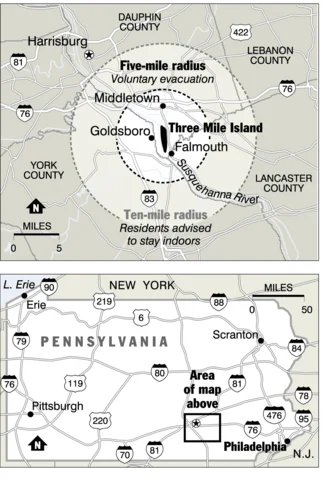
- Trying to relieve pressure on primary system, significant radiation released from plant's auxiliary building
- Citizens most vulnerable to radiation evacuated within 5 mile radius- pregnant women and pre-school-aged children
- Residents returned within 3 weeks
-

- Hydrogen bubble discovered in pressure vessel
- Concern for hydrogen explosion
- Determined no oxygen was present for hydrogen to burn/explode- hydrogen bubble reduced
-
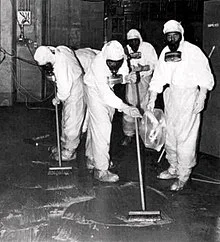
- Damaged reactor permanently closed and entombed in concrete
- Cost approximately $1 billion
- About 100 tons of damaged uranium fuel removed from reactor vessel and taken to Idaho National Lab
- The radioactive waste decays in steel and concrete containers
-
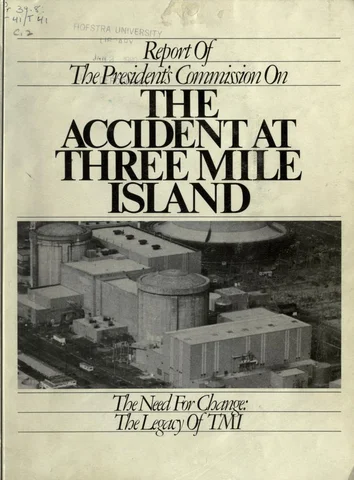
- President Jimmy Carter commissioned 12 people to investigate the TMI crisis and study was released 10/31/1979
- Criticized agencies for lapses in quality assurance and maintenance, inadequate operator training, lack of communication of important safety information, poor management, and complacency.
- "Fundamental changes will be necessary in the organization, procedures, and practices—and above all—in the attitudes" of the NRC and the nuclear industry."
-
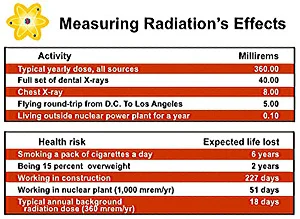
- Approximately 2.5 megacuries of radioactive gases and approximately 15 curies of iodine-131 released into environment
- Average radiation dose to people living within 10 miles of plant: 8 mrem (0.08 Sv) and no more than 100 mrem (1 mSv)
- 8 mrem equivalent to 1 chest x-ray; 100 mrem equivalent to 1/3 average background level of radiation
- Detection of excess cancer deaths in the population as a consequence of the radiation dose it received is not expected
-

- Post TMI: The number of reactors under construction in the U.S. declined from 1980-1998
- At the time of the TMI accident 129 power plants were approved for construction, only 53 were completed
- 2012 saw the first authorized nuclear power plant in Georgia since TMI
-
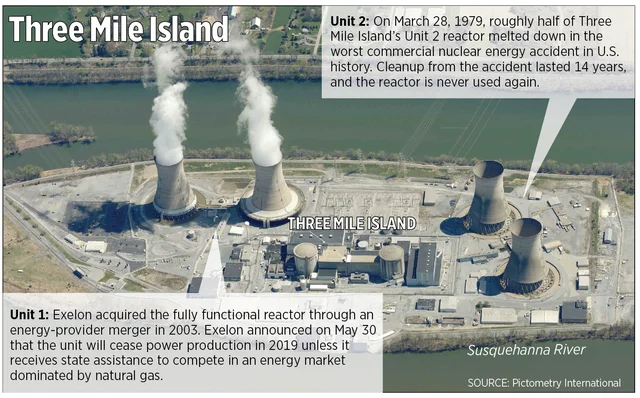
- In October 2009, TMI 1 license extended from April 2014- 2034
- September 2019: TMI 1 announced to be closed
- September 20, 2019 TMI 1 shutdown at noon